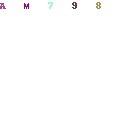Changing Rules for Naming
Recently, Seth Godin commented on the changing rules of naming products and companies. There are two great takeaways from what he's got to say.
The first: for a while getting the perfect domain name was the most important factor in a name. Godin believes this is now secondary to having a name that works well in Google or Yahoo. I don't know that Google has replaced the importance of the domain, but I think it's pretty close, and Godin's point is worth considering.
The second: placeholder names are dangerous. I've had placeholder names take over and become de facto official names more often that I care to remember. Get the name right first. Once everyone in the organization is using the placeholder - which may have all kinds of branding and legal problems - it's a hard beast to kill.
The first: for a while getting the perfect domain name was the most important factor in a name. Godin believes this is now secondary to having a name that works well in Google or Yahoo. I don't know that Google has replaced the importance of the domain, but I think it's pretty close, and Godin's point is worth considering.
The second: placeholder names are dangerous. I've had placeholder names take over and become de facto official names more often that I care to remember. Get the name right first. Once everyone in the organization is using the placeholder - which may have all kinds of branding and legal problems - it's a hard beast to kill.

